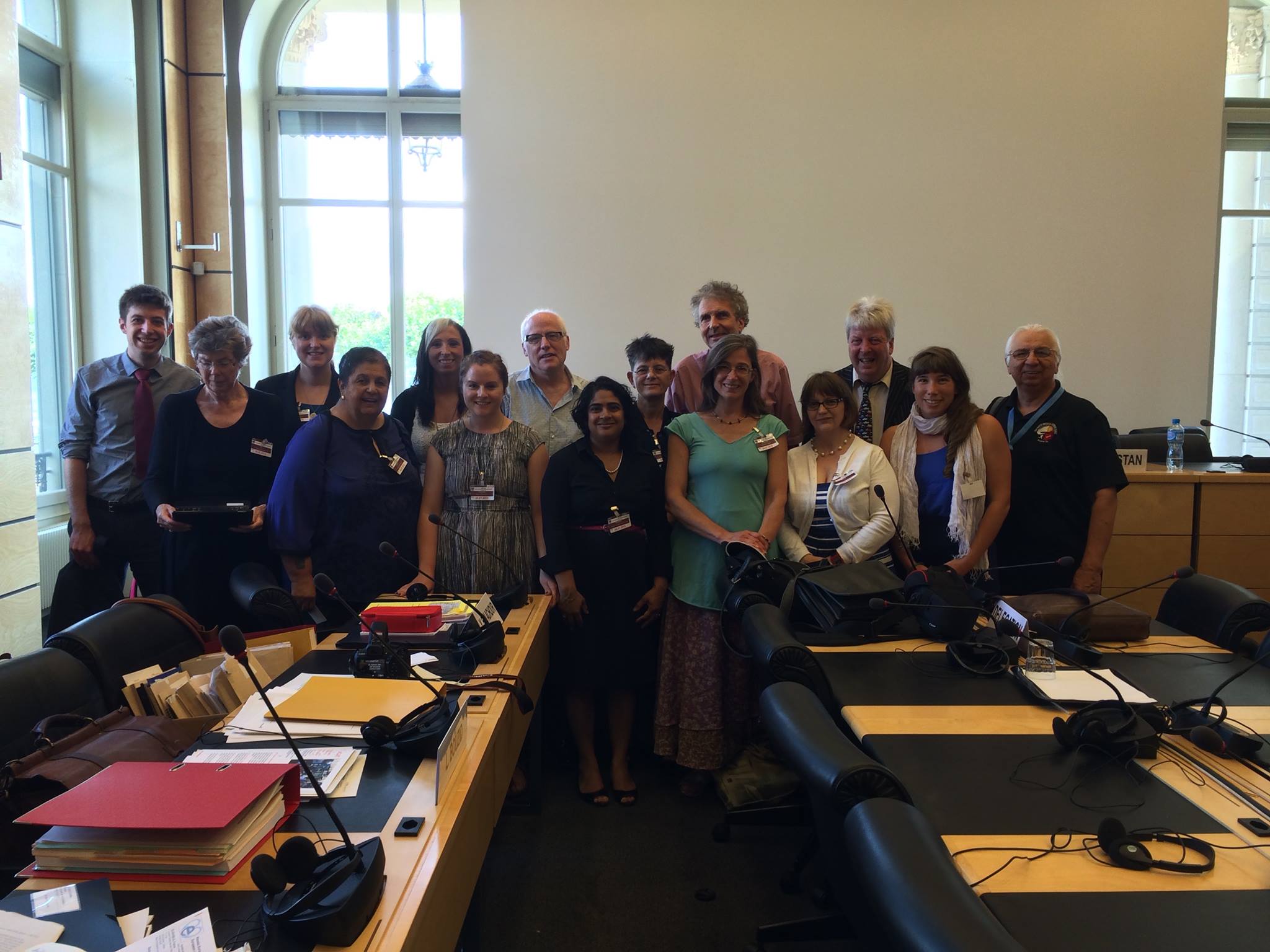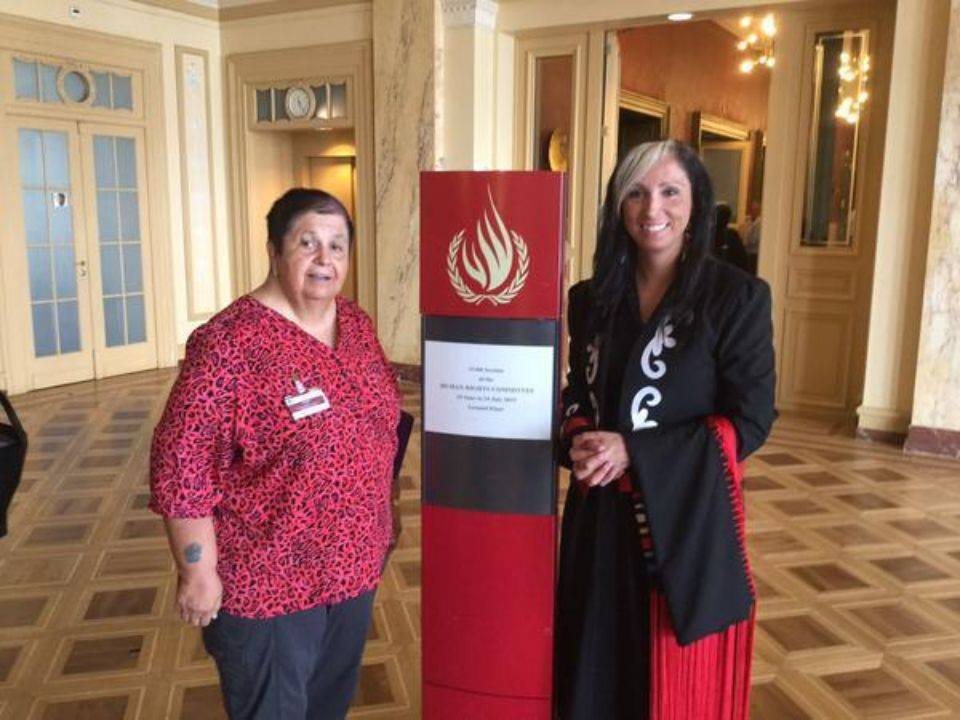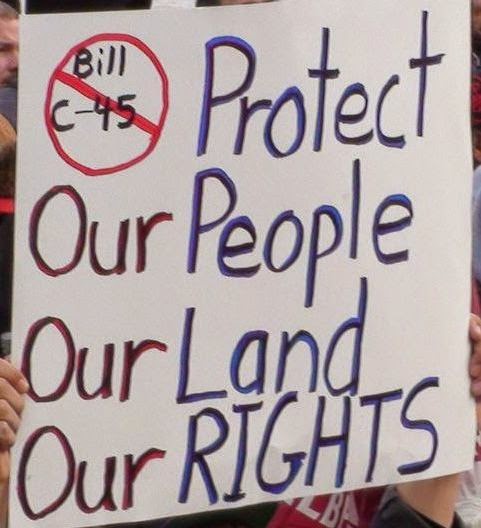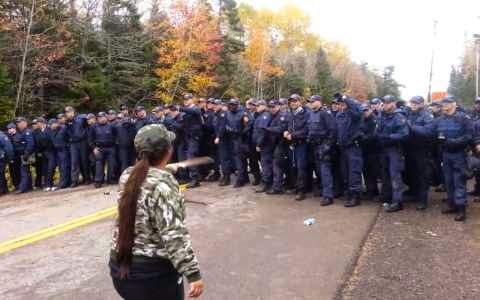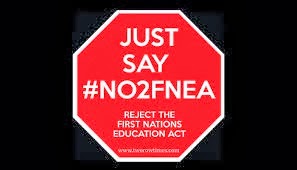Before being elected Prime Minister, Justin Trudeau told Canadians and First Nations that there was no more important relationship to him than the one with Indigenous peoples. To this end, he promised to engage with First Nations on a Nation-to-Nation basis where free, informed and prior consent means a veto. Once elected, he reiterated his promises:
(1) Engage in a Nation-to-Nation relationship with First Nations;
(2) Lift the 2% cap in First Nations education;
(3) Review and repeal all the legislation former Prime Minister Harper imposed on First Nations without their consent;
(4) Implement all 94 Calls to Action from the Truth and Reconciliation Report, which includes implementing the United Nations Declaration on the Rights of Indigenous Peoples (UNDRIP); and
(5) Complete a national inquiry on murdered and missing Indigenous women and girls.
True to his word, Trudeau’s first order of business was to mandate Indian Affairs Minister Carolyn Bennett, Justice Minister Jodi Wilson-Raybould and Status of Women Minister Patti Hajdu to develop an approach and mandate for an inquiry into murdered and missing Indigenous women and girls to find justice for them. By mid-December 2015, the first engagement sessions were held with the families of murdered and missing Indigenous women and girls, Indigenous women and their representative organizations, Indigenous leaders, and human rights experts to determine the scope and process of the inquiry. While these meetings were ongoing, Canada accepted written submissions and also engaged in an online survey regarding the scope and process for the inquiry.
http://www.aadnc-aandc.gc.ca/eng/1448638260896/1448638282066
It is important to note that both the pre-inquiry engagement process and the inquiry itself were to be done within a new political context – one which focused on openness. Trudeau promised to “bring new leadership and a new tone to Ottawa” and “set a higher bar for openness and transparency in government”. In fact, he went so far as to say that “Government and its information should be open by default.” His reasoning for doing so was to ensure that Canadians can trust their government and that government remains focused on the people it is meant to serve. All of these promises come straight from the Ministerial mandate letters.
http://pm.gc.ca/eng/ministerial-mandate-letters
As promised, the government posted the dates and locations of meetings; posted overviews of each session online; and issued a summary report of what they had heard once the pre-inquiry sessions had ended in March 2015. Out of respect for what seemed to be a mostly positive process, most leaders and advocates held back their commentary in hopes that the next stage would soon follow.
In the months which followed, none of the mandated Ministers reported on what was happening with regard to the inquiry. Some of us were wondering when they would establish a table to begin jointly drafting the Terms of Reference based on the input from these sessions and begin the process of jointly choosing the commissioners for the inquiry. Such a table was never established. Instead, we only found out that the Terms of Reference were in fact being unilaterally drafted by federal and provincial governments when they were leaked to the press. Shortly thereafter, the names of the Commissioners were also leaked. This is when it became very clear that the government reverted to its old secretive ways and had no real intention of working on a Nation-to-Nation basis with First Nations. It was clear Trudeau’s commitment to openness, transparency and working in partnership with Indigenous peoples had ended.
Despite Trudeau’s personal promise made at the Chiefs in Assembly that the “process by which it [inquiry] is established will be fully inclusive”, numerous requests to be a part of the drafting process, and be provided direct updates and briefings from the INAC Minister’s office, were either met with silence or commitments cancelled at the last minute. It was obvious that the government was playing politics with one of the most urgent issues ever to face Canada – the very lives of Indigenous women and girls. The renewed Nation-to-Nation relationship with Indigenous peoples was supposed to be based on “recognition of rights, respect, co-operation and partnership”. Trudeau had mandated these and other Ministers to work to gain the trust of Indigenous peoples and Canadians by demonstrating “honesty and willingness to listen”. Clearly, these Ministers have lost their way in regards to the national inquiry.
Being completely excluded from the drafting of the Terms of Reference and choosing the Commissioners was bad enough, but to face the wall of silence and exclusion made things much worse. Some of the families started to lose faith; Indigenous leaders were forced to speak out; and some Indigenous and allied advocates were pushed to raise their concerns publicly, since the direct route had been cut off. To make matters worse, the content of the draft Terms of Reference that were shared by the media, was a real slap in the face to many of those who participated in the engagement sessions, who made written submissions and/or who have tried to work very hard with various Ministers’ offices. The Terms of Reference did not reflect what was recommended by various United Nations human rights bodies, human rights organizations, legal experts, Indigenous leaders, Indigenous women’s organizations, Indigenous experts, or by the families.
http://www.cbc.ca/news/canada/british-columbia/terms-of-reference-mmiw-inquiry-lack-teeth-1.3689319
While there are many concerns with the draft Terms of Reference that were leaked by the media, the following is a brief overview of the main concerns as expressed by a variety of Indigenous women, families, leaders, experts and human rights allies:
(1) Police: There is no specific mandate to investigate police conduct, specifically racism & sexualized violence within police forces towards Indigenous women & girls, their families and First Nations;
(2) Evidence: There is no specific authorization for the inquiry to compel federal, provincial, and territorial documents, especially from police forces;
(3) Human Rights: The inquiry is not structured within a human rights framework which is a major weakness given Canada’s failure to protect the domestic and international human rights of Indigenous women and girls has been cited as a root cause of the crisis;
(4) Jurisdiction: There is no specific authority for the national inquiry to deal with matters that some provinces may feel are within their exclusive jurisdiction, like the critical issue of child and family services. Similarly, there is no explicit legal clarity around cross-jurisdictional sharing of information that will be required in the inquiry.
(5) Participant supports: There is no specific provision to provide protection from police for witnesses who bring forward information about police abuse. There are also no specific supports for travel, legal counsel or language translation.
My primary concern is related to the lack of specificity around racialized and sexualized police violence committed upon Indigenous women and girls and how police racism and misogyny impacts their decisions to investigate murders and disappearances or not, and the quality of those investigations.
As it stands now, there is no specific mandate to investigate failures by police forces to investigate murdered & missing Indigenous women & girls including both solved and unsolved cases, misnamed cases (murders deemed accidents), failures to file reports, failures to protect Indigenous women & girls; police facilitation (direct or indirect) of child prostitution and human trafficking, and the treatment of families and First Nations by police.
This is made all the more problematic by the fact that the draft Terms of Reference specifically directs the Commissioners NOT to investigate anything that could interfere with ongoing investigations – which would include cold cases not touched for over 20 years. Even more shocking is that Commissioners are instructed to send Indigenous families back to the same police forces that abused them, mistreated them or discriminated against them in the first place. Offering “navigators” akin to native court workers to help families deal with police processes is no replacement for a fulsome investigation of police failures and abuses, or the elimination of discriminatory police processes.
http://www.cbc.ca/news/canada/manitoba/mmiw-inquiry-police-steven-zhou-1.3690860
Even if one could argue that the current Terms of Reference does not need a specific mandate to review legislation, policies and oversight processes relating to policing and the justice system, the commissioners’ inability to compel police, their notes, or other police-held evidence under current laws and policies would make this implied power useless. These laws have resulted in a high impunity rate for police. If police officers who murdered unarmed racialized men in front of witnesses and on video can’t be compelled to cooperate with their own legislated Special Investigations Unit or share their notes and other evidence, what makes Trudeau think that some non-specific wording in the Terms of Reference will be able to do so? Canada is once again asking us to have faith in justice processes that protect police and harm Indigenous peoples. That is not what trust and partnership is about.
http://www.cbc.ca/news/canada/ottawa/abdirahman-abdi-siu-investigation-video-evidence-1.3700715
But Trudeau doesn’t have to take my word for it. Minister Bennett’s own report on the engagement sessions noted that not only should the inquiry be done in a human rights framework, but that the inquiry must address law enforcement – over and above systemic issues within the justice system. Families and experts from all over Canada said they want police accountability, independent reviews of cases, analysis of police racialized and sexualized conduct towards Indigenous women and girls, and the sexual exploitations of Indigenous women and girls.
http://www.aadnc-aandc.gc.ca/eng/1463677554486/1463677615622
Trudeau himself promised that the national inquiry would investigate “uncomfortable truths” and seek concrete actions related specifically to law enforcement. While the uncomfortable truth about police racism and sexualized violence, abuse and corruption has been in the public eye lately through media exposing the extensive nature of police abuses – Indigenous peoples have long known about this problem. We need this national inquiry to shine a light on this dark and uncomfortable truth for all to see, so we can put an end to it.
Prime Minister Trudeau, you made a promise to us. It’s up to you to force your Ministers to fulfill that promise. Convene a table this week so that Indigenous peoples can jointly draft the Terms of Reference and pick the Commissioners. Nothing less will live up to your Nation-to-Nation commitment. It’s never too late.
Additional resources:
